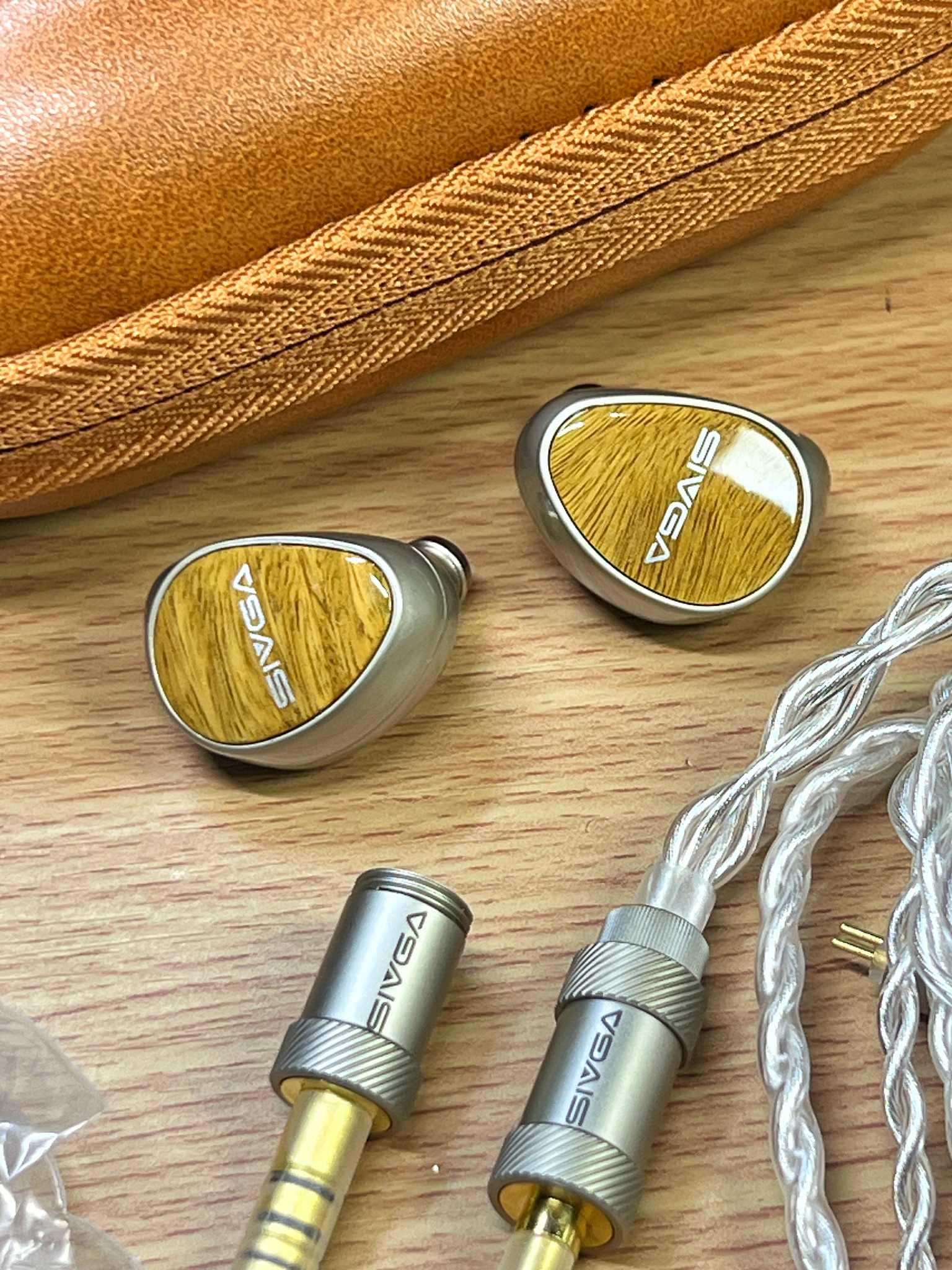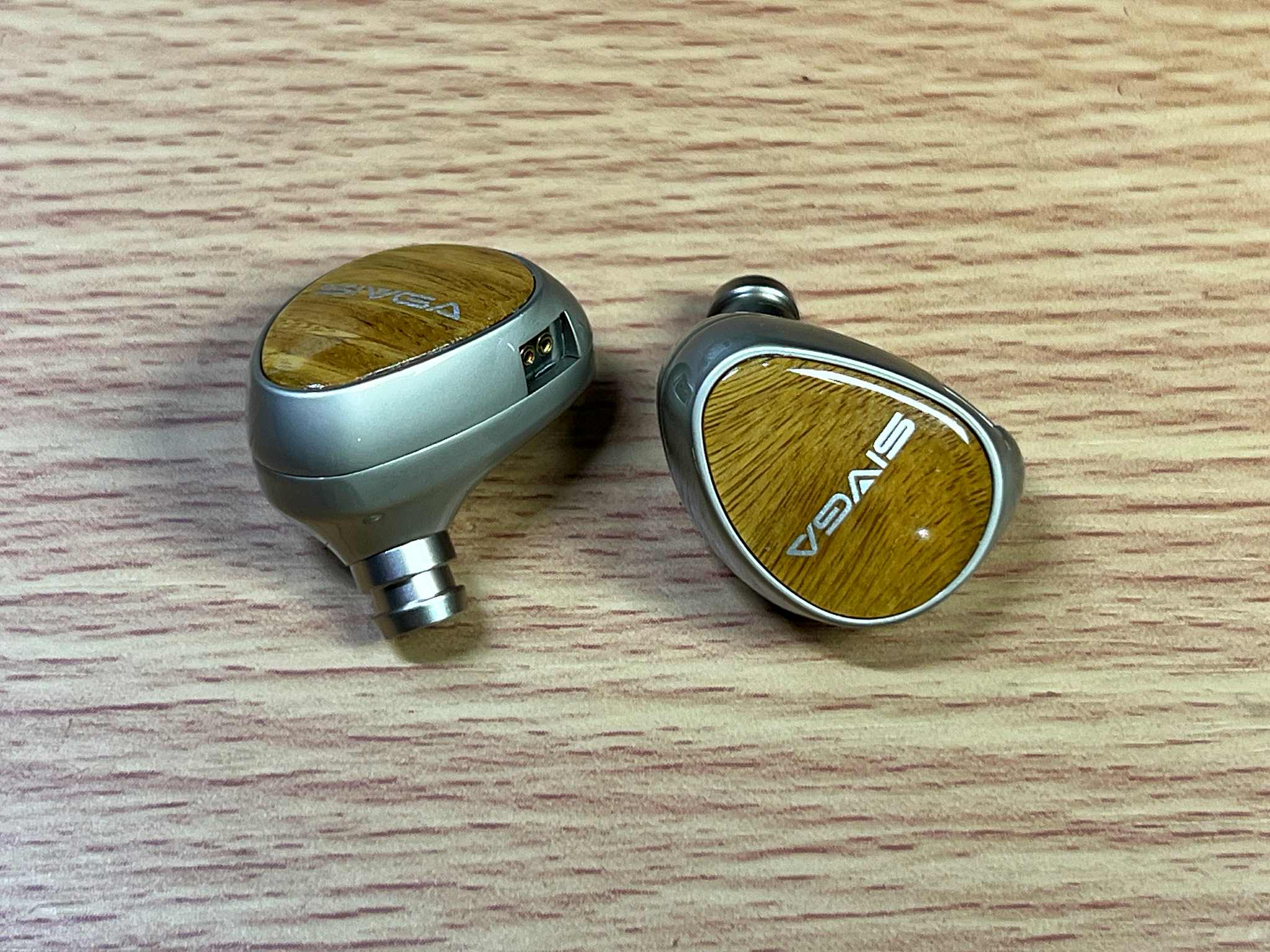Sivga Que UTG
A Glass Diaphragm DD That Thinks It's a Planar
Pros:
• Ultra Thin Glass driver offers clean, technical, and detailed sound.
• Excellent subbass extension with tight, clean bass response.
• Natural, lifelike midrange.
• Airy, well-extended treble.
• Outstanding imaging, separation, and staging.
• Beautiful design with premium materials.
• Comfortable, ergonomic fit.
• High-quality cable with interchangeable terminations included.
• Ultra Thin Glass driver offers clean, technical, and detailed sound.
• Excellent subbass extension with tight, clean bass response.
• Natural, lifelike midrange.
• Airy, well-extended treble.
• Outstanding imaging, separation, and staging.
• Beautiful design with premium materials.
• Comfortable, ergonomic fit.
• High-quality cable with interchangeable terminations included.
Cons:
• Occasionally metallic tone on certain treble-heavy tracks.
• May be a bit too analytical for those preferring a warmer, thicker tuning.
• Single DD purists may still prefer the classic "lush" DD character.
• May be a bit too analytical for those preferring a warmer, thicker tuning.
• Single DD purists may still prefer the classic "lush" DD character.

If you had told me a year ago that I’d be sitting here listening to music through an IEM using an ultra-thin sheet of glass for its diaphragm, I probably would’ve laughed and said, “Yeah, right.” But here we are — the Sivga Que UTG has arrived, and honestly, it’s a perfect example of how dynamic drivers aren’t done surprising us.
For years, dynamic drivers have been known for their rich tonality and natural sound, but sometimes criticized for lacking the speed and technical precision of newer driver tech like planars or BAs. The Que UTG takes that old narrative and flips it on its head. With this Ultra Thin Glass diaphragm, Sivga manages to blend cutting-edge material science with the tried-and-true qualities we love from DDs.
It sits right at that sweet spot, where innovation meets tradition delivering a listening experience that feels both familiar and refreshingly modern. The fact that they managed to squeeze this kind of performance out of a single dynamic driver using a flat piece of glass? That’s the kind of boundary-pushing that keeps this hobby exciting.

Whats in the box? here is my quick unboxing video of the Sivga Que UTG.


First Impressions & Build:
Before getting into the sound, it's worth highlighting Sivga’s attention to detail in the build. The shells are crafted from zinc alloy, giving them a solid, premium feel without being overly heavy. They strike a nice balance between sturdiness and comfort, with enough heft to feel substantial but not fatiguing over longer sessions.


The faceplates feature genuine South American green sandalwood, adding a natural touch. This isn’t a cheap veneer or imitation; the wood grain is authentic and gives each pair a slightly unique look. In the ear, they look refined and understated, premium without being flashy.


Fit and comfort are excellent. Despite the solid construction, the ergonomic shaping allows for a secure, comfortable fit that holds well during extended use. No unnecessary pressure points, no constant adjustments — they simply sit well on my ears.


The included cable is also thoughtfully designed. It’s a high-purity oxygen-free copper cable with silver plating, interchangeable terminations for flexibility with different gear.


Overall, Sivga has delivered a well-built, refined product where both design and practicality come together cleanly.

Ultra Thin Glass — A Different Take on the Dynamic Driver
At the core of this IEM is Sivga’s standout feature: a single 10mm Ultra Thin Glass (UTG) diaphragm. Developed by Nippon Electric Glass (NEG) in Japan, this isn't your typical dynamic driver setup. The use of flat glass material is more commonly associated with high-end speaker technology and even the newer mobile phones with folding displays, but here, Sivga has managed to adapt it into the much smaller, far more demanding space of an IEM.

Importantly, this driver isn’t just a technical novelty or a marketing headline. The UTG diaphragm introduces real performance benefits. Its ultra-thin, rigid structure allows for extremely fast transient response and controlled diaphragm movement, which translates to cleaner, more accurate sound reproduction. Compared to conventional dynamic drivers, the UTG design offers greater speed and precision, while still preserving the natural weight and tonal richness that dynamic drivers are known for.
Sound Performance:

The Planar-Like Character
What caught me most by surprise with the Que UTG is just how much it channels the qualities typically associated with planar drivers. The speed, the cleanliness, the precise control — it delivers a level of transient response and accuracy that feels very planar-like. Yet, at the same time, it retains the natural tonality, weight, and dynamic punch that dynamic drivers are known for. In many ways, you’re getting a well-balanced blend of both worlds: the technical precision of a planar combined with the musical warmth and natural decay of a well-tuned dynamic driver.
Bass:
Let’s start with what many listeners will notice first — the bass. If you’re going strictly by the frequency graph, you might assume the Que UTG is somewhat light in this department. But in actual listening, the reality is very different — and far better.
The Que UTG delivers one of the cleanest, most controlled bass responses I’ve encountered from a single dynamic driver. The subbass reaches impressively deep, providing a tight, well-defined rumble that maintains excellent control and never bleeds into the midbass. It’s present when called for, but never overbearing — a very mature tuning choice.
The midbass carries just enough punch and body to give music proper weight without clouding the rest of the spectrum. It’s fast, articulate, and well-textured particularly well-suited for genres like lo-fi, house, electronic, and jazz. Upright bass lines in jazz, for example, come through with natural resonance and clean definition, avoiding the common pitfalls of sounding either too thin or overly thick.
What stands out most is the bass's ability to walk the fine line between musicality and precision. There’s enough energy to keep things engaging, but it remains disciplined and controlled, allowing the rest of the frequency range to shine. It’s a bass presentation that feels purposeful rather than boosted for effect full-bodied but never bloated.
Midrange:
The midrange on the Que UTG is handled with a level of finesse that reflects the care put into its tuning. Vocals are placed right where they belong — neither too recessed nor overly forward — resulting in a presentation that feels natural and balanced. The tonality here is highly inviting, making vocals easy to connect with and enjoy over long listening sessions.
There’s a slight lift in the upper mids that brings a bit of extra energy and clarity, adding presence without ever crossing into shouty or fatiguing territory. Both male and female vocals are rendered with lifelike texture and proper weight, allowing each performance to sound authentic and engaging.
Instruments come through with warmth and clarity, preserving their individual character without smearing or sounding artificially boosted. The midrange strikes a careful balance between technical accuracy and musicality — it remains clean and well-resolved without becoming dry or sterile. It’s a midrange that draws you in rather than one that demands your attention.
Treble:
The treble on the Que UTG leans toward the brighter, more airy side of the spectrum. Extension is excellent, allowing plenty of micro-detail to surface while contributing to a spacious and open soundstage. Cymbals have a clean shimmer, hi-hats are crisp and well-defined, and the overall sense of air keeps the presentation lively without feeling closed-in.
To be fully transparent, there are occasional moments — particularly with certain recordings — where crash cymbals can come across slightly metallic or thin. However, this remains track-dependent and never crosses into harshness or sibilance. For the vast majority of listening scenarios, it maintains control and remains highly listenable, even over extended sessions.
Overall, the treble adds clarity and dimension without sacrificing comfort. It delivers the level of detail many enthusiasts look for, while remaining accessible for more casual or longer listening periods.
Imaging, Separation & Soundstage
This is where the Que UTG starts to show just how capable its unique driver design really is. Imaging and separation are excellent — far beyond what you might typically expect from a single dynamic driver. Instrument placement feels precise, with each element occupying its own defined space, even on more complex or fast-paced tracks where congestion often becomes an issue.
Layering has a near-holographic quality, creating a strong sense of depth that allows the listener to easily pick apart individual instruments and vocals. The soundstage itself offers a well-proportioned sense of width and depth, contributing to a spacious, three-dimensional presentation that enhances the overall listening experience.
It’s one of those rare single DD IEMs that consistently makes you pause and think: “This is all coming from just one driver?” Sivga’s implementation of the UTG technology clearly pays dividends here, delivering technical performance that punches above what you’d typically expect in this configuration.

Comparison: Woodnote vs Que UTG
Having spent time with both, it’s clear that while the Que UTG and the Woodnote share some general tuning philosophies, their execution and priorities set them apart.
• Woodnote: Lush, musical, and organic. Its focus is on delivering a rich, full-bodied sound that invites you to relax and simply enjoy the music. It’s the kind of tuning that excels at long, laid-back listening sessions where you’re not chasing every detail, but rather immersing yourself in the overall mood and flow.
• Que UTG: Cleaner, more technical, and more resolving. While still musical and engaging, it leans closer to a reference-style presentation, offering greater clarity, precision, and micro-detail. It’s well-suited for listeners who want to hear into the finer textures of a recording — to analyze the layers while still enjoying the musicality.
The best way to sum it up: the Woodnote is for the evenings where you brew your favorite single origin specialty coffee, sitback and sip slowly and let the music wash over you; the Que UTG is for those sessions when you want to sit forward, focus, and fully explore every nuance of your music collection.

Final Thoughts: A Technical Marvel in a Beautiful Shell
The Sivga Que UTG represents an impressive step forward in single dynamic driver design. It combines innovative material technology — with its Ultra Thin Glass diaphragm, and thoughtful, refined tuning. Sivga has clearly approached this as more than just a showcase for new driver tech; the result is a legitimately well-rounded performer.
For listeners seeking an IEM that delivers excellent clarity, clean and controlled bass, natural and balanced mids, precise imaging, and a spacious soundstage all while preserving the organic character and musicality that dynamic drivers are loved for the Que UTG is well worth serious consideration. It strikes that rare balance of being both technically proficient and emotionally engaging, making it a standout in its price category.
Link: https://www.linsoul.com/products/si...nKw_5YEfOiwdlBPb_gOXLIbZE2IVKIbOLbxO3TIug1t4F
- Get link
- X
- Other Apps
- Get link
- X
- Other Apps
Comments
Post a Comment